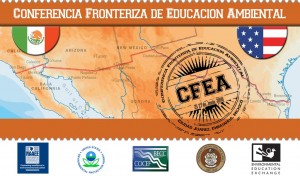EE Collaboration in the US-Mexico Border Region the environment of the US-Mexico border region

Originally appears in the Summer 2009 issue
When I was asked recently to characterize the environmental educator from the US-Mexico border region, I used the term “Jack or Jill of all trades.” It reflects the reality confronted by many of us in this unique region: as environmental educators, we are also lobbyist, accountants, researchers, international relations specialists, website managers, all around problem solvers, and, on top of it all, specialists in our own areas of environmental expertise. As a result of environmental problems in the region, people from many different areas of expertise on both sides of the border suddenly find themselves engaged in some form of environmental education, helping others in their communities learn to care about their surrounding environment and empowering them to make a difference. This multidisciplinary scenario is full of advantages since these individuals and organizations bring to the field a unique diversity and richness. At the same time, it makes it difficult to define what environmental education means in the border region, how effective it is, and how to improve it. For this reason, collaboration among individuals and organizations across the border is essential to enhancing EE capacity and creating common ground for the region. Through the years, efforts to improve cross-border collaboration have built on each other and created an informal, yet robust, network of EE professionals that interact, share and collaborate with each other.
This content is restricted to subscribers only.
If you are not yet a subscriber, please consider taking out a subscription here.
If you are an existing subscriber, kindly log in or contact us at info@greenteacher.com for more information.





